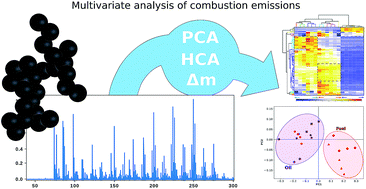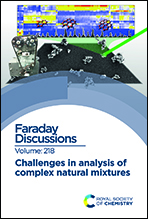On the benefits of using multivariate analysis in mass spectrometric studies of combustion-generated aerosols†
Abstract
The intricate chemistry of the carbonaceous particle surface layer (which drives their reactivity, environmental and health impacts) results in complex mass spectra. In this respect, detailed molecular-level analysis of combustion emissions may be challenging even with high-resolution mass spectrometry. Building on a recently proposed comprehensive methodology (encompassing all stages from sampling to data reduction), we propose herein a comparative analysis of soot particles produced by three different sources: a miniCAST standard generator, a laboratory diffusion flame and a single cylinder internal combustion engine. The surface composition is probed by either laser or secondary ion mass spectrometry. Two examples of multivariate analysis, Principal component analysis and hierarchical clustering analysis proved their efficiency in both identifying general trends and evidencing subtle differences that otherwise would remain unnoticed in the plethora of data generated during mass spectrometric analyses. Chemical information extracted from these multivariate statistical procedures contributes to a better understanding of fundamental combustion processes and also opens to practical applications such as the tracing of engine emissions.

- This article is part of the themed collection: Challenges in analysis of complex natural mixtures


 Please wait while we load your content...
Please wait while we load your content...